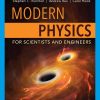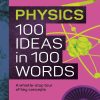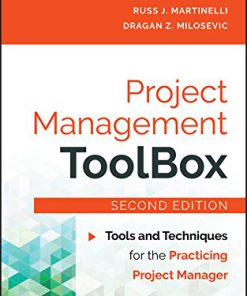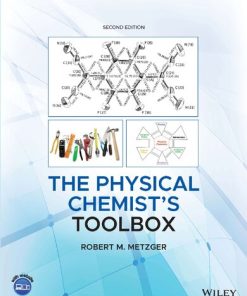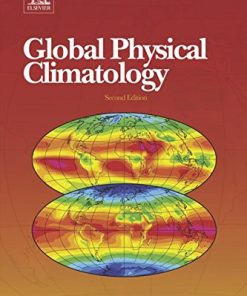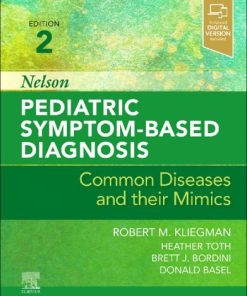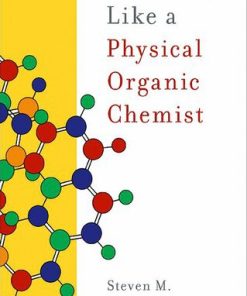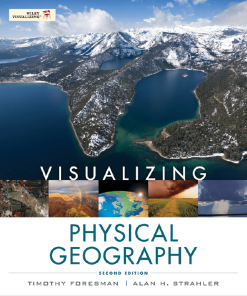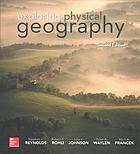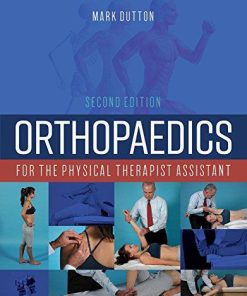(EBook PDF) The Physical Chemist’s Toolbox 2nd Edition by Robert Metzger 1119755808 9781119755807 full chapters
$50.00 Original price was: $50.00.$25.00Current price is: $25.00.
The Physical Chemist’s Toolbox 2nd Edition by Robert M. Metzger – Ebook PDF Instant Download/DeliveryISBN: 1119755808, 9781119755807
Full download The Physical Chemist’s Toolbox 2nd Edition after payment
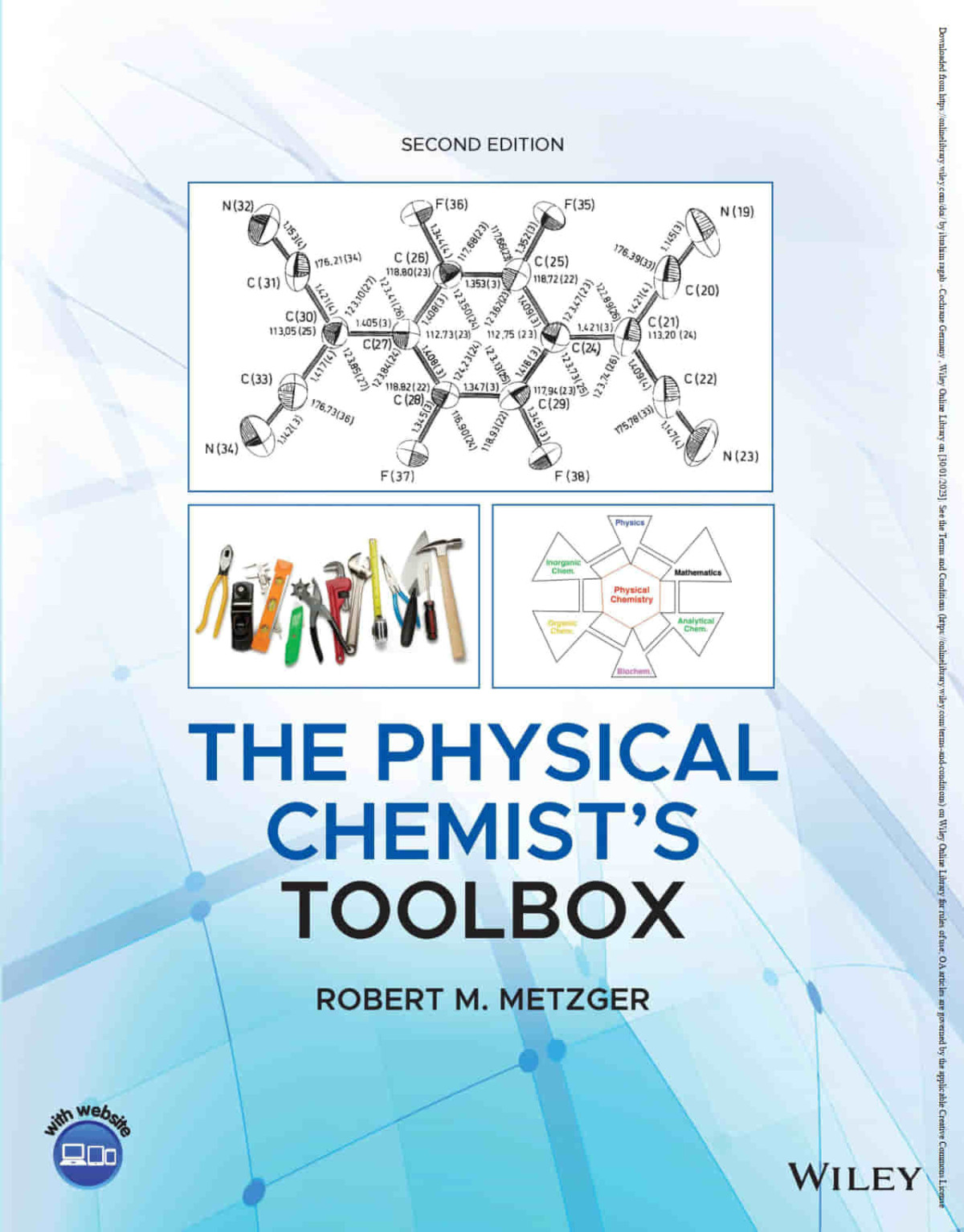
Product details:
ISBN-10 : 1119755808
ISBN-13 : 9781119755807
Author: Robert M. Metzger
Assembling a great deal of material in one place, this book serves as a valuable guide for chemists and related physical scientists throughout their careers — covering essential equations, theories, and tools needed for conducting and interpreting contemporary research.
The Physical Chemist’s Toolbox 2nd Table of contents:
1 Fundamental Particles, Fundamental Forces, and Mathematical Tools
1.0 Introduction
1.1 Fundamental Forces, Elementary Particles, Nuclei, and Atoms
1.2 Force One: Gravitation
1.3 Force Three: Weak Force
1.4 Force Four: Strong Force
1.5 Review of Mathematical Concepts
1.6 Mechanics, Vectors, Tensors, and Determinants
1.7 Hooke’s Law, One‐dimensional Chain, Dispersion Relations, and Stress–Strain Tensors
1.8 Lagrange’s Function and Hamilton’s Function
1.9 Force Two: Electromagnetism
1.10 The Size of Fundamental Particles and the Physical Meaning of Quantum Numbers
1.11 Special Relativity
1.12 Feynman Diagrams
1.13 General Relativity, Gravity as a Curvature of Space‐Time and the Size of the Universe
1.14 Elements of Optics
1.15 Transforms
1.16 Contour Integration and Kramers–Kronig Relations
1.17 Error Analysis
1.18 Statistics
1.19 General References
References
End‐of‐Chapter Problems
2 Quantum Mechanics
2.0 Introduction
2.1 Quantum Postulates
2.2 Quantum Mechanics of the Free Electron
2.3 The Particle in a Box
2.4 The Harmonic Oscillator
2.5 The Hamiltonian for the One‐electron Atom in a Central Field
2.6 The Rigid Rotor
2.7 The Hamiltonian and Eigenfunctions for the N‐electron Atom or Molecule
2.8 Space Quantization: the Allowed Orientations of Orbital and Spin Angular Momenta
2.9 Aufbau for Atoms
2.10 Lewis Octets
2.11 Promotion and Hybridization of Atomic Orbitals
2.12 Bonding in Hydrogen Molecule: Valence Bond vs. Molecular Orbital and Variational Approaches
2.13 Aufbau for Molecules: σ and π Bonding
2.14 Perturbation Theory
2.15 The Hartree–Fock Method
2.16 The Roothaan–Hall Matrix Formulation of the Hartree–Fock Problem
2.17 Implementation of the Hartree–Fock Method
2.18 Configuration Interaction
2.19 Density Functional Theory (DFT)
2.20 Molecular Mechanics
2.21 The Hückel Problem, or “Simple” Hückel Molecular Orbital Theory (SHMO)
2.22 Extended Hückel Theory
2.23 Pariser–Parr–Pople Theory
2.24 Neglect of Differential Overlap (NDO) Methods
2.25 Magnetic Moments, Landé g‐factor, Larmor Precession, Spin–Orbit Coupling, and Thomas Precession
2.26 More Terms of the Hamiltonian Operator for a Many‐Electron Atom or Molecule
2.27 “Van der Waals” Interactions in Molecules
2.28 Atomic Structure: LS (Russell–Saunders) vs. jj Coupling
2.29 Molecular Spectroscopy
2.30 Einstein A and B Coefficients
2.31 Absorption of Light: Beer–Bouguer–Lambert Law, or Beer’s Law
2.32 Time‐Dependent Perturbation Theory: The Rabi Formula
2.33 Fermi’s Golden Rule
2.34 Photon–Molecule Interaction – The Hamiltonian
2.35 Transition Moments and Einstein Coefficients
2.36 Quantum Electrodynamics
2.37 General Radiative Transitions
2.38 Static vs. Resonant Detection
2.39 Static Electric–Dipole Selection Rules for the One‐Electron Atom
2.40 Static Electric‐Dipole Selection Rules for the Harmonic Oscillator
2.41 Lifetimes from Resonance Lineshapes
2.42 Light Scattering
References
End‐of‐Chapter Problems
3 Thermodynamics
3.0 Review of Thermodynamics
3.1 The Three (Plus One) Laws of Thermodynamics
3.2 Useful Auxiliary Functions: Enthalpy, Helmholtz Free Energy, and Gibbs Free Energy
3.3 Perfect Differentials (Two‐Forms)
3.4 Useful Measurables: Thermal Expansivity, Heat Capacity, Joule–Thomson and Isothermal Thompson Coefficients, and the Chemical Potential
3.5 Gibbs Phase Rule
3.6 Crystalline and Amorphous Solids
3.7 Liquids
3.8 Perfect Gas Law, the PVT Surface, the van der Waals Equation and Virial Equations
3.9 Arrhenius Assumption
3.10 More About Gases: Maxwell–Boltzmann Distribution, Collision Frequency, Mean Free Path, and Gaseous Effusion
3.11 More About Liquids
3.12 More About Solids
3.13 Liquid Crystals
3.14 Two‐component Liquid–Vapor Phase Diagrams
3.15 Two‐component Solid–Liquid Phase Diagrams for Solid–Liquid Equilibria
3.16 The Chemical Potential, Ideal Solutions, and Colligative Properties
3.17 Two‐Dimensional Version of the Perfect Gas Law
3.18 Contact Angle and Surface Tension Measurements
3.19 Adiabatic and Diathermal Walls and Fixed‐Temperature Baths
3.20 Thermodynamic Efficiency: The Carnot, Otto, Diesel, and Rankine Cycles
3.21 International Standards for Time, Mass, Length, Temperature, and Brightness
3.22 Standard States and Enthalpies and Gibbs Free Energies of Formation
3.23 Bond Enthalpies
3.24 Electronegativity
3.25 Reaching for High and Low Temperatures
3.26 Attainment of High and Low Pressures
References
End‐of‐Chapter Problems
4 Statistical Mechanics
4.0 Introduction
4.1 Replicas and Ensembles, Fermions, Bosons, and Boltzons
4.2 CB, FD, and BE Distributions, and the Microcanonical Ensemble
4.3 Canonical, Grand Canonical, Isothermal‐Isobaric, and Generalized Ensembles
4.4 Links Between the Partition Functions and Some Thermodynamic Functions
4.5 Heat Capacities
4.6 Black‐Box Radiation, and the Birth of Quantum Mechanics
4.7 Electronic Heat Capacity: Drude vs. Fermi–Dirac
4.8 Magnetic Susceptibilities
4.9 Electric Susceptibilities
4.10 Universal Theory of Critical Phenomena
References
End‐of‐Chapter Problems
5 Kinetics, Equilibria, and Electrochemistry
5.0 Introduction
5.1 Energetics, Reaction Coordinate, Transition States, Intermediates, and Catalysis
5.2 Classification of Reaction Types
5.3 First‐Order and Unimolecular Reactions
5.4 Second‐Order (Unmixed) and Unmixed Bimolecular Reactions
5.5 Second‐Order (Mixed) and Mixed Bimolecular Reactions
5.6 Third‐Order (Unmixed) and Unmixed Termolecular Reactions
5.7 Reversible Reactions
5.8 Consecutive Reactions
5.9 The Steady‐State Approximation and the Rate‐Determining Step
5.10 Approximation Methods: the Michaelis–Menten Equation
5.11 Chain Reactions. The Reaction of Hydrogen and Bromine at High Temperature
5.12 Using Laplace Transforms to Solve Kinetics Equations
5.13 Reaction Rate Theories and Energy Surfaces
5.14 Marcus Theory of Electron Transfer
5.15 Equilibria in Aqueous Solution: pH
5.16 Equilibria in Nonaqueous Solvents
5.17 Lewis Acids and Lewis Bases
5.18 Electrochemistry: Electrode Potentials and the Nernst Equation
5.19 Gouy–Chapman Double‐Layer Theory
5.20 Nernst–Planck and Cottrell Equations
Further Reading
References
End‐of‐Chapter Problems
6 Symmetry
6.0 Symmetry
6.1 Symmetry in Crystals
6.2 Symmetry Operations and Point Groups
6.3 Group Theory and Character Tables
6.4 Bravais Lattices
6.5 The 32 Crystallographic Point Groups
6.6 The 17 Plane Groups
6.7 The 230 Crystallographic Space Groups
6.8 Listing of Elements, Simple Compounds, and Their Crystal Structures
6.9 The Wigner–Seitz Cell
6.10 Reciprocal Lattice
6.11 Symmetry of 2D Surfaces
6.12 Descent of Symmetry
6.13 Covariant and Contravariant Transformations
6.14 Example of Descent of Symmetry: VO2
References
7 Solid State Physics
7.0 Introduction
7.1 Electrical Resistance, Hall Effect, Drude Model, Tunneling, and the Landauer Formula
7.2 Fermi–Dirac Statistics for Electron Gas: Sommerfeld Model
7.3 X‐ray Diffraction
7.4 Quantum Numbers in a Macroscopic Solid: Bloch Waves
7.5 Bloch Waves in One Dimension and Dispersion Relations
7.6 Band Structures
7.7 Theoretical Methods for Computing Wavefunctions in Solids
7.8 Mixed Valence and One‐Dimensional Instabilities
7.9 Defects and Mobile Excitations in Solids and Molecules
7.10 Superconductivity
7.11 Lattice Energies: Madelung, Repulsion, Dispersion, Dipole–dipole, and Others
References
8 Electrical Circuits, Amplifiers, and Computers
8.0 Introduction
8.1 Electrical Components
8.2 Simple Circuits with No Rectification or Amplification
8.3 Vacuum Tube Diode
8.4 Vacuum Tube Triode
8.5 Conduction in Pure and Doped Si and Ge
8.6 Rectification in pn Junction Diodes or Rectifiers
8.7 pnp and npn Transistors
8.8 Small‐Signal Theory for Transistors
8.9 Large‐Signal Behavior of Junction Transistors
8.10 Unipolar or Field‐Effect Transistors (FET)
8.11 JFETs
8.12 Operational Amplifiers
8.13 Historical Introduction to Computers
8.14 Elementary Digital Concepts
8.15 Computer Architecture
8.16 Compilers
8.17 Simple Programming
8.18 Communicating with a Computer Operating System Commands
References
End‐of‐Chapter Problems
9 Sources, Sensors, and Detection Methods
9.0 Introduction
9.1 Cosmic Rays
9.2 Source: Isotopes and Fission Energy Sources
9.3 Source: Solar Energy
9.4 Source: Earth‐Based Nuclear Fusion
9.5 Source: Photovoltaic Cells
9.6 X‐rays
9.7 Cherenkov and Synchrotron Radiation, Bremsstrahlung
9.8 Conventional Light Sources
9.9 Microwave Sources
9.10 Masers and Lasers
9.11 Lightning
9.12 St. Elmo Fire
9.13 Aurora Borealis
9.14 Fireflies
9.15 Arcs and Sparks
9.16 Flames
9.17 Light‐Emitting Diodes: Inorganic, Organic, and Polymeric
9.18 Chemical Explosives and High‐Energy Compounds
9.19 Storage Batteries and Electrochemical Cells
9.20 Generation of High Voltages
9.21 Time Sensors
9.22 Mass Sensors
9.23 Temperature Sensors
9.24 Pressure Sensors
9.25 Heat Capacities
9.26 Photographic Plates and Films
9.27 Wilson Cloud Chamber and Glaser H2 Bubble Chamber
9.28 Scintillation Counter
9.29 Geiger–Müller Counter
9.30 Proportional Counters
9.31 Spark Chamber
9.32 Photomultipliers
9.33 X‐ray Area Detectors (Array Detectors)
9.34 X‐ray and Infrared Fluoroscopy and Image Intensifiers
9.35 Direct Semiconductor Detectors
9.36 Charge‐Coupled Devices
9.37 Photoelectric Cells
9.38 Interferometers
9.39 Superconducting Quantum Interference Device Magnetometers
9.40 Absorption Wavemeter
9.41 Magnetometers
9.42 Voltage Sensors
9.43 Slits and Bandwidth
9.44 Noise
9.45 Phase‐Sensitive Detection or Lock‐in Amplifiers
9.46 Heterodyne Detection
9.47 Derivative Detection
References
10 Instruments
10.0 Introduction
10.1 Physical Separations: Fractional Crystallization and Distillation
10.2 Chromatography
10.3 Biochemical Synthesizers and Polymerase Chain Reaction
10.4 Elemental Analysis
10.5 Mass Spectrometry
10.6 Optical and Electron Microscopy
10.7 Scanned Probe Microscopies: STM, AFM, MFM, and LFM
10.8 X‐ray Diffraction of Ordered Crystals, Liquids, and Disordered Solids
10.9 Spectroscopy
10.10 Visible–Ultraviolet (V–UV) Spectroscopy
10.11 Atomic Absorption, Atomic Emission, and Atomic Fluorescence Spectroscopies
10.12 Infrared and Near‐Infrared Spectroscopy
10.13 Raman Spectroscopy
10.14 Inelastic Electron Tunneling Spectroscopy
10.15 Fluorescence Spectroscopy
10.16 Microwave Spectroscopy
10.17 Surface Plasmon Resonance
10.18 X‐ray Photoelectron Spectroscopy (XPS) and Auger Electron Spectroscopy (AES)
10.19 Magnetic Measurements
10.20 Magnetic Resonance
10.21 Mössbauer Spectroscopy
10.22 Electrochemical Methods
10.23 Electric Susceptibility
10.24 Nonlinear Optical Properties
10.25 Ellipsometry
10.26 Calorimetry
References
11 Inorganic Chemistry and Nanomaterials
11.0 Introduction
11.1 Periodicity, the Discovery and Abundance of the Chemical Elements, and Valences
11.2 Nomenclature
11.3 Ionization Energies
11.4 Expansion of Acid and Base Concepts
11.5 Hard and Soft Acids and Bases
11.6 Eighteen‐Electron “Rule”
11.7 Measures of Radii of Atoms and Ions
11.8 Bond Energies
11.9 Ionic Radii as a Function of Coordination Number, and Crystal Lattices
11.10 Structure and Bonding of Transition Metals
11.11 The Virtues of Valence‐Bond Theory
11.12 The Virtues of VSEPR Theory
11.13 The Virtues of Crystal Field Theory
11.14 The Virtues of Ligand‐Field Theory
11.15 The Virtues of Walsh Diagrams
11.16 Electron Transfer Theory and Mixed Valence
11.17 Mad Romp Through the Periodic Table
11.18 Reactions of Inorganic Complexes
11.19 Organometallics
11.20 Industrial Inorganic Chemistry
11.21 Elements Essential to Human Nutrition
11.22 Nanomaterials
11.23 Nanoparticle Synthesis
11.24 Size Dispersion in Nanoparticles
11.25 Excitons, Plasmons, and Quantum Dots in Semiconducting Nanoparticles
References
End‐of‐Chapter Problems
12 Organic and Polymer Chemistry and Catalysis
12.0 Introduction
12.1 Structure and Bonding
12.2 Nomenclature
12.3 Functional Groups
12.4 Optical Activity and Enantiomers
12.5 Reactivity of Molecules
12.6 Lewis Acids and Bases, Strong and Weak
12.7 Resonance
12.8 Electron‐pair Pushing
12.9 Walsh Diagrams
12.10 Many Ways of Looking at Thermal or Photochemical Cycloadditions
12.11 Polarity of Solutes and Solvents
12.12 Trends in Acid Dissociation Constants Explained
12.13 Reaction Types
12.14 Compendium of Reaction Types
12.15 Molecular Rearrangements
12.16 Organometallic Compounds
12.17 Catalysis
12.18 Linear Free Energy Relationships
12.19 Retrosynthetic Analysis
12.20 Stable Free Radicals
12.21 Organic Polymers
12.22 Protecting Groups
12.23 Environmental Concerns
References
End‐of‐Chapter Problems
13 Biochemistry
13.0 Introduction
13.1 Cells and Cell Walls
13.2 Amino Acids and Oligopeptides
13.3 Peptides and Proteins
13.4 Enzymes
13.5 Chymotrypsin
13.6 Lysozyme
13.7 Carbohydrates and Glycoproteins
13.8 The Immune System
13.9 Nucleotides, Nucleic Acids, DNA, and RNA
13.10 Gene Expression from DNA to RNA Yields Polypeptide Assembly on a Ribosome
13.11 DNA Replication
13.12 DNA Manifold Replication, Clones and the Genome
13.13 Bio‐energetics I: AMP, ADP, and ATP
13.14 Bio‐energetics II: Anaerobic Glycolysis
13.15 Bio‐energetics III: Citric Acid (or Krebs) Cycle
13.16 Vitamins
13.17 Oxidative Phosphorylation
13.18 Photosynthesis and Photophosphorylation
13.19 Neurons, the Nervous System, and the Human Brain
13.20 Parting Thoughts
People also search for The Physical Chemist’s Toolbox 2nd:
chemist’s toolbox quizlet
chemistry the physical setting textbook pdf
the ultimate chemical equations handbook pdf
chemistry the physical setting topic 3
chemistry the physical setting workbook answers
Tags:
The Physical,Chemist,Toolbox,Robert Metzger
You may also like…
Uncategorized
Earth Sciences
Medicine - Pediatrics
Chemistry
Uncategorized
Earth Sciences - Geography


